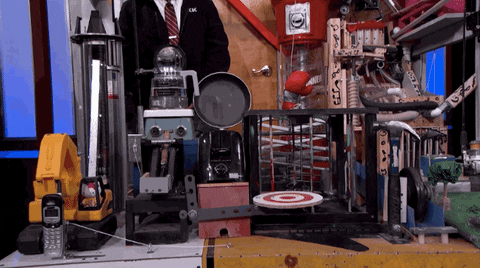You want to know where I learned the real fundamentals of user-centred design?
Not at a design agency. Not in a government discovery. It was working in retail.
I've spoken at length about my time at Build a Bear Workshop but I've had plenty of other retail experience that's hidden from my Linkedin.
In 2009, in Vancouver, in a Spirit Halloween pop-up store in Station Square next to Metrotown, a ten-week carnival of polyester, plastic tombstones, smoke machines and customer insight - and only one 45 minute CD playing on repeat.
It was messy, temporary, and gloriously unhinged — and it taught me boatloads about how people actually interact with the things we make.
Here’s what that chintzy seasonal nightmare taught me about UCD all packaged into a lovely little seasonal blog post for engagement!
Users Are Creative Misusers (Design for the Chaos Path)
In design, we love a neat “happy path.” At Spirit Halloween, there was no such thing.
People tried on costumes in groups, swapped wigs across aisles, used foam axes as swords, and re-enacted full soap operas in the mirror. Multiple times we found hench gym bros buying French Maid outfits for themselves. The changing rooms? Let’s just say they were multi-purpose environments.
The store wasn’t broken — it was human, and sticky, oh so sticky.
The Lesson:
Real people will always bend your design to fit their needs, moods, and wild impulses.
Don’t design for order — design for entropy. Build systems that can survive creative misuse and still deliver some version of delight.
Stories build human connection
One of my coworkers was convinced — utterly convinced — that she had overdosed, died, gone to hell, met the devil, and returned.
Now, most jobs don’t prepare you for that particular 1-to-1 causally brought up when your hanging up plastic fangs or moving smoke fluid. But it’s a perfect reminder: context is everything. Further conversations with her and her friends revealed she had indeed flat lined
Spirit Halloween wasn’t “normal life.” It was liminal space — a world between worlds where people could play, pretend, and project their alter egos. Everyone was running on glitter, energy drinks and crates of donuts from the cheap supermarket across the parking lot.
The Lesson:
Users don’t come to your product as calm, rational beings. They bring stress, stories, and whatever mental state they’re currently living in.
If you design for “average,” you miss what’s actually happening. Understand their context, and your design suddenly makes sense. Explore and embrace the weird. Put humanity in the heart of your designs.
Temporary Fixes Become Permanent Problems
Spirit Halloween stores are built fast and built cheap. The POS system crashed daily, the back room was a mountain of tangled wigs, and every “temporary” fix became gospel within hours. Our till wizard Chris (a man who looked like Antony Worral Thompson if he wanted to emulate Captain Birdseye) was building entire systems on hacks and god help you if you didn't follow his scratched out instructions on the till roll.
Six weeks later, no one could tell what was intentional and what was a hack.
This is only half as chaotic as the end till state…
The Lesson:
Every “we’ll fix it later” creates future pain. Technical debt, design debt, culture debt — it all piles up.
If your internal systems are chaos, your user experience will be too.
Don’t let “temporary” become your team’s personality trait.
The Payment Path Is Never What You Expect
On my last day, the payroll system gave up. Paperwork vanished. The manager shrugged and said, “You can take the Oscar the Grouch costume instead.”
And so I was paid — in full, fuzzy, green Muppet. And reader, I WAS THRILLED. I wore the shit out of that costume and I'm sad I had to leave it when I returned to the UK.
It was ridiculous, inefficient, and weirdly elegant. The organization found its own workaround when the system failed.
The Lesson:
Humans are ingenious. When the designed path breaks, they’ll invent their own — often hilariously.
The workarounds, the hacks, the “Oscar the Grouch” moments — that’s where the real insight lives.
In the End: The Pop-Up as Prototype
Spirit Halloween was a pop-up experiment in user behaviour. A temporary world full of friction, chaos, joy and on reflection illegal labour practices — exactly like most products in their natural habitat.
It taught me that UCD isn’t about perfection; it’s about resilience - I just didn’t know about building products yet.




